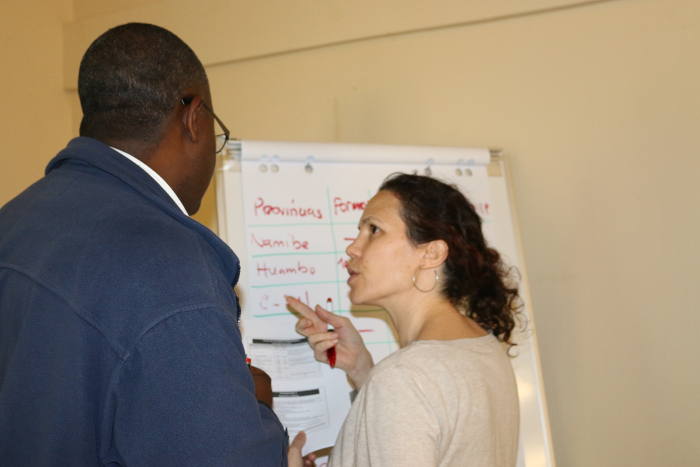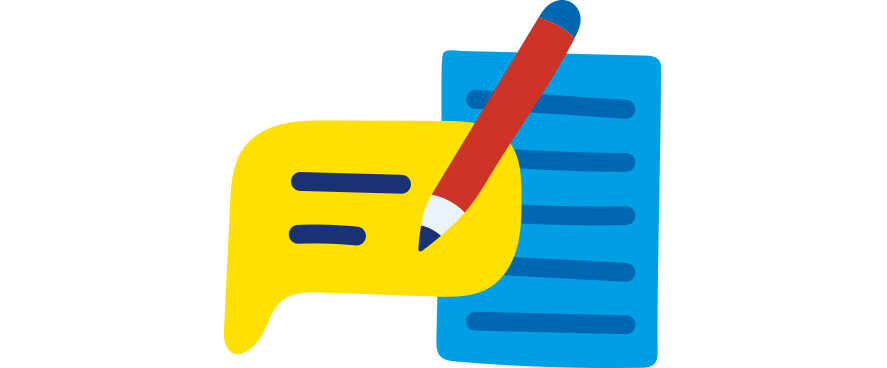-
13 September 2018
Category : Opinion
Dynamic municipalities in Angola
Núria Garriga reflects on what has been achieved and what has been learned through the project to support local development in Angola
 Núria Garriga, expert in project institutional strengthening
Núria Garriga, expert in project institutional strengtheningAlmost 24 years ago, the Social Support Fund, an Angolan institution which the FIIAPP has worked with on a local development support project, began to work on constructing social infrastructures and therefore access to public services in Angola’s most vulnerable or rural communities.
Since then, the project, funded by the European Union, has worked on three main components: building infrastructures, boosting the local economy and reinforcing the capacities of local institutions. Now, there is also a more structured view of these communities; they each depend on one another and work cannot be done freely, a message that has finally come together.
Of these components, the key component everything revolves around is the last, the reinforcement of the municipal administrations. What have we achieved? We have contributed to increasing the number of municipalities the Social Support Fund had already reached to a total of 36. In 30 of them, work started from scratch in a process that began with a municipal diagnosis and several studies, followed by planning.
Until then, the diagnoses of the municipality were inanimate snapshots: this is what the municipality has, this is what the health sector is like, etc. Another thing that I think has been strengthened with our support is that we have improved the idea, which they had already come up with, of creating a “dynamic profile”, that is to say, things change from one day to the next.
The final achievement in this reinforcement of municipal capacities was the introduction of a web-based platform, a municipal basic information system that anyone can access from any point on the planet. This updated information on the health sector or the social assistance sector of the municipality can then be accessed from any Ministry in order to make decisions on these matters.
A diagnosis to create opportunities
The promotion of the local economy through these municipal diagnoses sought to identify those products or sectors with greatest potential in the municipality. From there, studies were made of the value chains of these products to identify what investment opportunities there were for the municipality’s economy to develop. Normally, these were the products that involve more labour or which report more visits; there were several criteria to determine this.
Another aspect of this component and that was not foreseen, but which resulted from the reflection and the influence of the World Bank with its social protection programmes, is that productive inclusion has been worked on, which ultimately aims to increase the income of poor families.
The intention was that people excluded from the market and the productive economic sector and who have a subsistence activity should have the opportunity to conduct an economic activity or to improve the one they were doing. It started in ten municipalities, where vulnerable people and potential beneficiaries were identified and 1,400 people were selected.
Those who did not have economic activity were offered training to submit a practically applicable plan. They then received a kit to start working with. For those who already had an activity, training was given in business management to teach them to control costs and profits and to identify gaps in their economic activity. A business improvement plan was thus made and they were also provided with a kit.
Of the total of 1,400 selected, around 1,200 received the kit, since some did not finish their training or did not do the required project. This kit included the material they needed to start the activity. This might be physical equipment, such as a sewing machine or a generator. Some women who make flour (receiving grain, processing it, delivering it and keeping the shell which they sell for livestock) asked for buckets as well as grain to have more stock and be able to continue working.
One of the important things about this part of the project is that there is great diversity because there are many different activities, and we were able to adapt to the needs of each one.
We are now monitoring how these people’s lives have changed and how satisfied they are. A colleague has visited several of these beneficiaries to see whether the kit was used or not. There was a certain risk, which is that when someone gives you a kit with brand-new equipment, the first thing you do is go and sell it.
An initial evaluation was made with the questionnaire and the on-site visit. As it was a pilot phase, there were many lessons learned: such as that training should not be mandatory, but a further element of the kit, and that some unselected people managed to blag their way in.
Lessons learned in Angola
A study of lessons learned can be very useful for other cooperation projects: how the team is formed, how the project is established in the field, how it is performed, how the monitoring is done, accountability, etc.
In some cases, we also needed to be able to draw on other projects managed by the FIIAPP; it is interesting to know how they were conducted and whether we have points in common with them. I think this is a lesson learned for the Foundation: we could come up with a strategy for knowledge management.
The views and opinions expressed in this blog are the sole responsibility of the person who write them.




